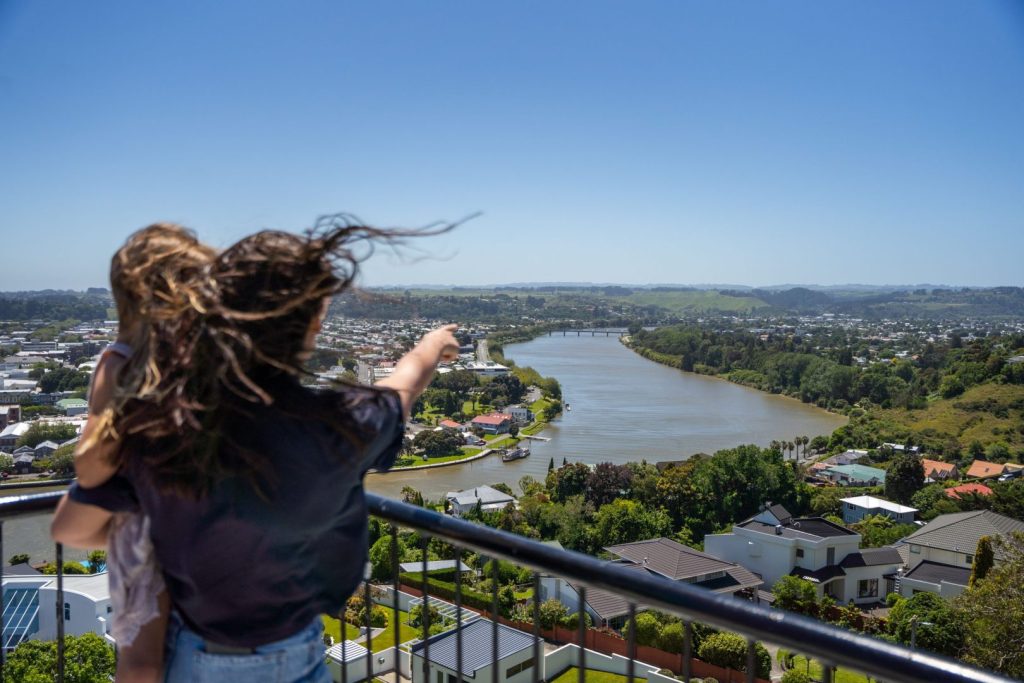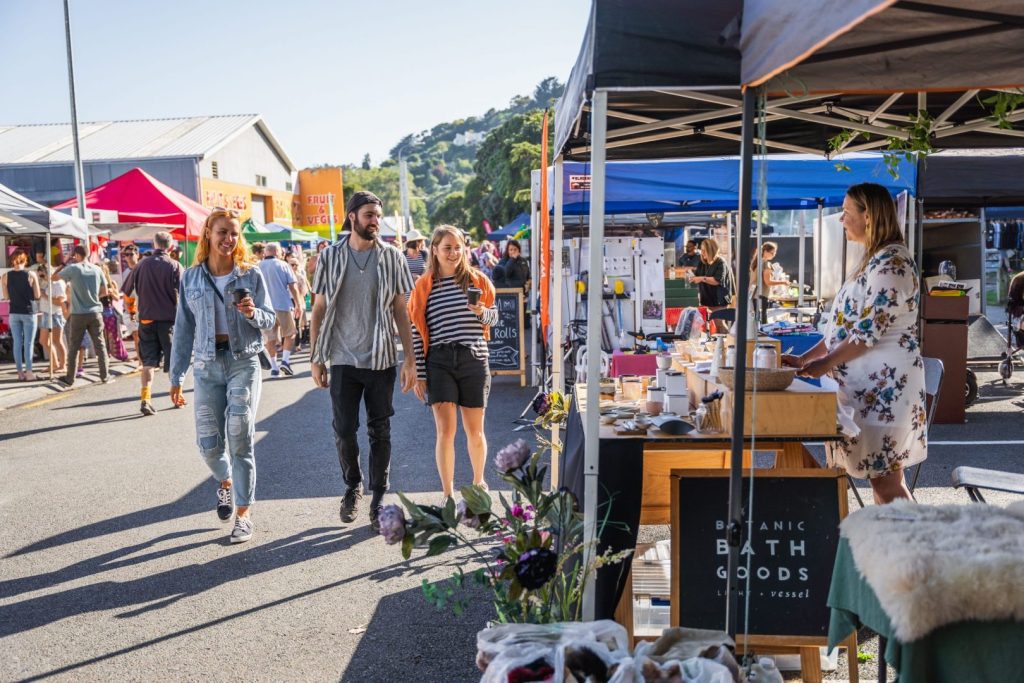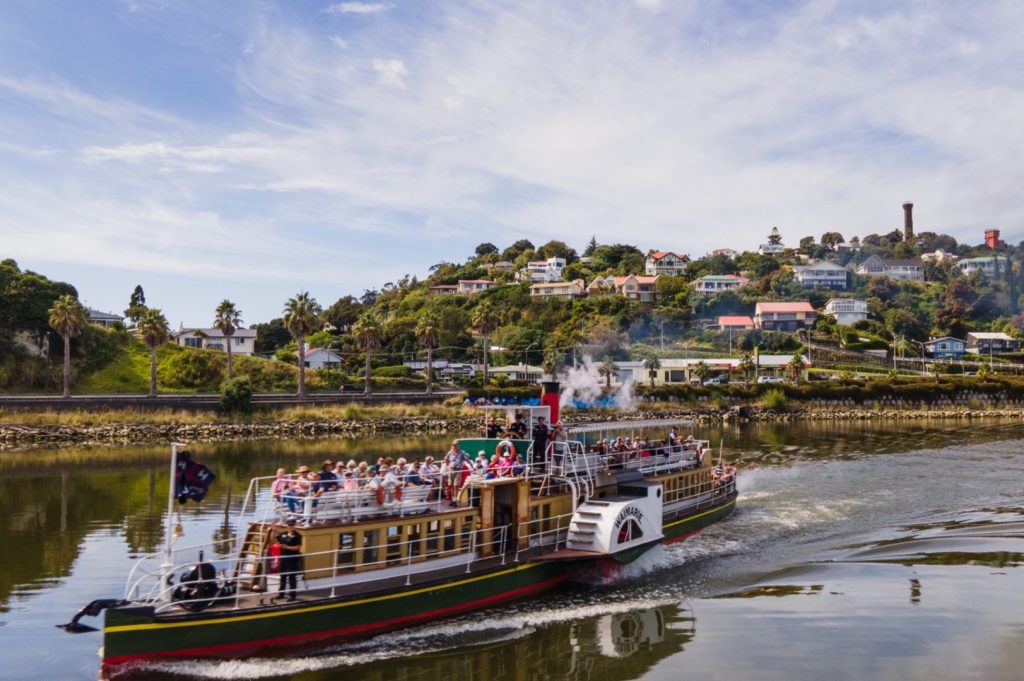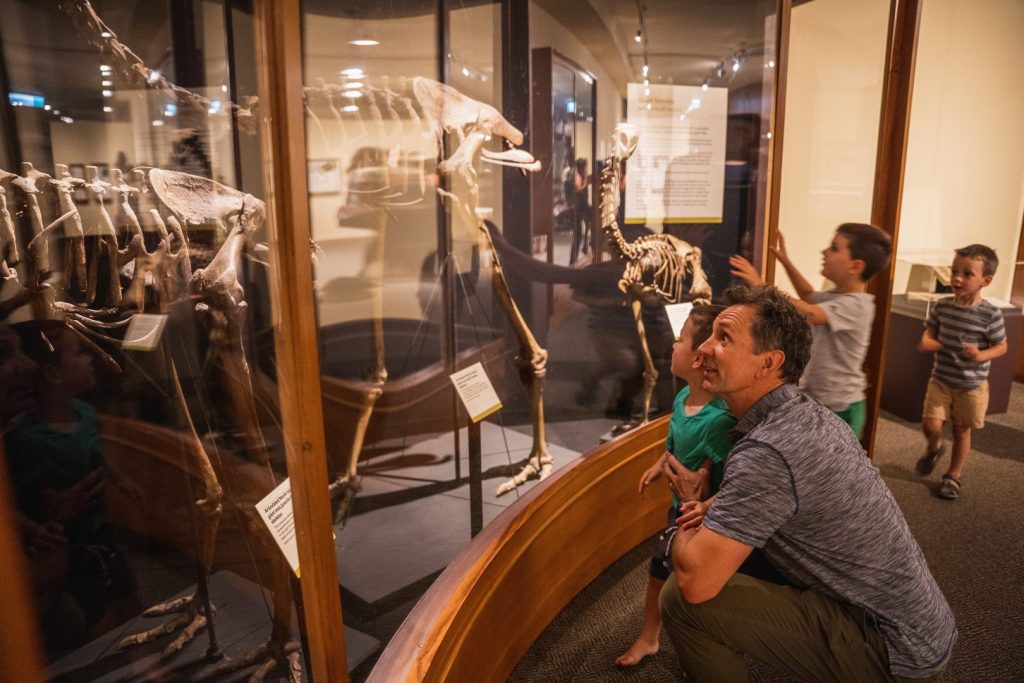Top 10 Activities
Whanganui is one-of-a-kind. Check out these things you can only do and see in Whanganui.
Ride the Durie Hill Elevator
We are the proud home of the Southern Hemisphere’s only in-ground public transport elevator. The Durie Hill Elevator was built 1919 to help the residents of the hilltop Durie Hill suburb commute into town. The view from the top is fantastic – as is the long, 213-metre tunnel you take to reach the elevator (definitely a highlight for photographers).

Visit St Paul’s Anglican Memorial Church at Putiki
Filled with beautiful and intricate Māori carvings and tukutuku weaving a tale of the people and the land of this area, St Paul’s Anglican Memorial Church is one of the most intricately and beautifully decorated churches in Aotearoa.
St Paul’s Memorial Church site itself dates back to 1842, and several buildings have been constructed on this site over the years. See the building and hear the story from local guides steeped in the knowledge of this historic treasure. St Paul’s tours cost $10 and can be booked through the Whanganui i-SITE Visitor Centre.
Drive or cycle the River Road
This intimate and scenic 64-kilometre road leads to the Whanganui National Park and enables travelers to visit small river communities and experience a pace of life that is unique in contrast to much of the rest of the country.
You can read the Whanganui River Road Guide here.
Catch a gig at the Opera House
The Royal Wanganui Opera House is New Zealand’s last Victorian theatre, elegantly standing at over 115 years old and still hosting all kinds of local and touring acts. Check out what’s on and add a show to your itinerary.
You can visit the Royal Wanganui Opera House Facebook page here.
Shop the Whanganui River Markets
These weekly Saturday markets are located on the historic site of early Māori trading.
The Whanganui River is the backdrop to stalls providing an array of local food producers in the Farmers Market section, alongside an eclectic mix of collectors of vintage and retro, makers of art and traditional crafts, plants, and delicious street food in the River Traders area. Open every Saturday at 8.30am -1.00pm, Taupō Quay.
Or visit the Whanganui RiverMarkets Facebook page.

Wander through Paloma Gardens
A garden like you’ve never seen. Explore the exotic Paloma Gardens, landscaped with plants from all over the world, from the jungles of Asia to the deserts of Africa and the Americas. Paloma Gardens has been awarded “Garden of National Significance” by the New Zealand Gardens Trust for the past thirteen years.
The garden is presented as several distinct zones, including the Palm Garden, the Desert House, the Garden of Death, the Bamboo Forests, the Jardin Exotique, the Wedding Lawn and the two Arboreta – unique among the Gardens In Whanganui.
You can visit the Paloma Gardens website here.
Or have a look at Paloma Gardens Facebook page.
Quartz Museum of Studio Ceramics
As the only dedicated ceramics museum in New Zealand, Quartz Museum is worth checking out. The New Zealand History Collection consists of almost 100 pieces illustrating the development of studio ceramics from the early 20th century to the present day. The Museum was established to house the Rick Rudd Collection of more than 400 ceramic works. Works are also borrowed from private collections for themed and special exhibitions and each year ceramic installation is commissioned.
You can find out more on the Quartz Museum of Studio Ceramics website.
Ride the Paddle Steamer Waimarie
The Paddle Steamer Waimarie was salvaged from the bottom of the Whanganui River, where it sat for around 50 years, and restored to its former glory and re-launched in 2000 to make it New Zealand’s last steam-powered and coal-fired passenger paddle steamer operating from the golden riverboat era of the late 19th and early 20th centuries. The Waimarie cruises upriver from October to May.
You can visit the Paddle Steamer Waimarie website here.
Or got to the Paddle Steamer Waimarie Facebook page.

Cruise on the Motor Vessel Wairua
Built by Yarrow & company of London in early 1904 and sent out to Whanganui for A. Hatrick & company in a kit-set form, this beautifull vessel has a proud history.
In 1987, a group of local men spent 19 years restoring Wairua to its 1913 condition and the vessel has been a welcome sight on the river since 2006. Take a day trip to Hipango Park or cruise up to Upokongaro, this special journey can’t be beaten.
Or like the Motor Vessel Wairua’s Facebook page
Explore the Whanganui Regional Museum
Set in the heart of the Whanganui cultural centre on Queens Park, the Whanganui Regional Museum offers visitors a rare experience-a journey into the hearts and minds of the people of Whanganui, and a look at their treasures, their loves, their everyday lives and their dramas, their history and their future.
When the ordinary is exchanged for the extraordinary, you know you’re in Whanganui. Famed for its Taonga Māori Collection, you can see the exceptional creations of the tūpuna (ancestors) of today’s Whanganui River Māori.
You can find out more on the Whanganui Regional Museum website.
Or on the Whanganui Regional Museum Facebook page.

















































